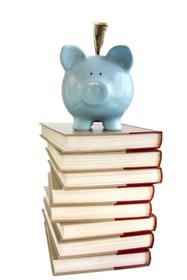Serving 372 students in grades 7-12, Sequoia Secondary School ranks in the bottom 50% of all schools in Arizona for overall test scores (math proficiency is bottom 50%, and reading proficiency is bottom 50%).
The percentage of students achieving proficiency in math was 6-9% (which was lower than the Arizona state average of 34%). The percentage of students achieving proficiency in reading/language arts was 15% (which was lower than the Arizona state average of 40%).
Minority enrollment was 86% of the student body (majority Hispanic), which was higher than the Arizona state average of 66% (majority Hispanic).
School Overview
School Type
Grades Offered
Grades 7-12
(No virtual instruction)
(No virtual instruction)
Total Students
372 students
Gender %
Total Classroom Teachers
n/a
School Calendar
School Rankings
Overall Testing Rank
#1814 out of 1921 schools
(Bottom 50%)
(Bottom 50%)
Math Test Scores (% Proficient)
6-9%
34%
Reading/Language Arts Test Scores (% Proficient)
15%
40%
Science Test Scores (% Proficient)
6-9%
24%
Student-Teacher Ratio
n/a
17:1
American Indian
4%
5%
Asian
n/a
3%
Hispanic
74%
48%
Black
5%
6%
White
14%
34%
Hawaiian
1%
n/a
Two or more races
2%
4%
All Ethnic Groups
Graduation Rate
80-89%
77%
Participates in the National School Lunch Program (NSLP)
Yes
Eligible for Free Lunch
47%
40%
Eligible for Reduced Lunch (19-20)
6%
7%
School Statewide Testing
School District Name
Source: National Center for Education Statistics (NCES), AZ Dept. of Education
School Notes
- Sequoia Charter Schools main campus is the Horne Campus (Mesa, AZ).
- Sequoia's Horne Campus began as a small, publicly funded charter school. The original four buildings have been renovated multiple times and added to (currently nine buildings total) with construction going underway to add a gymnasium.
- Current schools operating on the Horne Campus include; SSDHH, Sequoia K-6, Sequoia Charter (grades 7-12), Sequoia Family Learning, and Sequoia Choice Learning Center.
Frequently Asked Questions
What is Sequoia Secondary School's ranking?
Sequoia Secondary School is ranked #1814 out of 1,921 schools, which ranks it among the bottom 50% of public schools in Arizona.
What percent of students have achieved state testing proficiency in math and reading?
6-9% of students have achieved math proficiency (compared to the 34% AZ state average), while 15% of students have achieved reading proficiency (compared to the 40% AZ state average).
What is the graduation rate of Sequoia Secondary School?
The graduation rate of Sequoia Secondary School is 80-89%, which is higher than the Arizona state average of 77%.
How many students attend Sequoia Secondary School?
372 students attend Sequoia Secondary School.
What is the racial composition of the student body?
74% of Sequoia Secondary School students are Hispanic, 14% of students are White, 5% of students are Black, 4% of students are American Indian, 2% of students are Two or more races, and 1% of students are Hawaiian.
What grades does Sequoia Secondary School offer ?
Sequoia Secondary School offers enrollment in grades 7-12 (No virtual instruction).
What school district is Sequoia Secondary School part of?
Sequoia Secondary School is part of Edkey Inc. DBA Sequoia Charter School (6446) School District.
Recent Articles

How Public Schools Support Students on Free / Reduced-Lunch Programs
Explore how U.S. public schools support students eligible for free or reduced-price lunch through nutrition, academic, and wraparound services in 2025.

Hidden Costs of Public Schools: Fees, Supplies & Extras
Explore the hidden costs in public schools鈥攆ees, supplies, extracurriculars鈥攁nd how parents can plan for them in 2025.

Public School Funding 2025: What Families Should Know
Essential insights on public school funding in 2025鈥攈ow it works, what鈥檚 changing, and what families should know to stay ahead.





